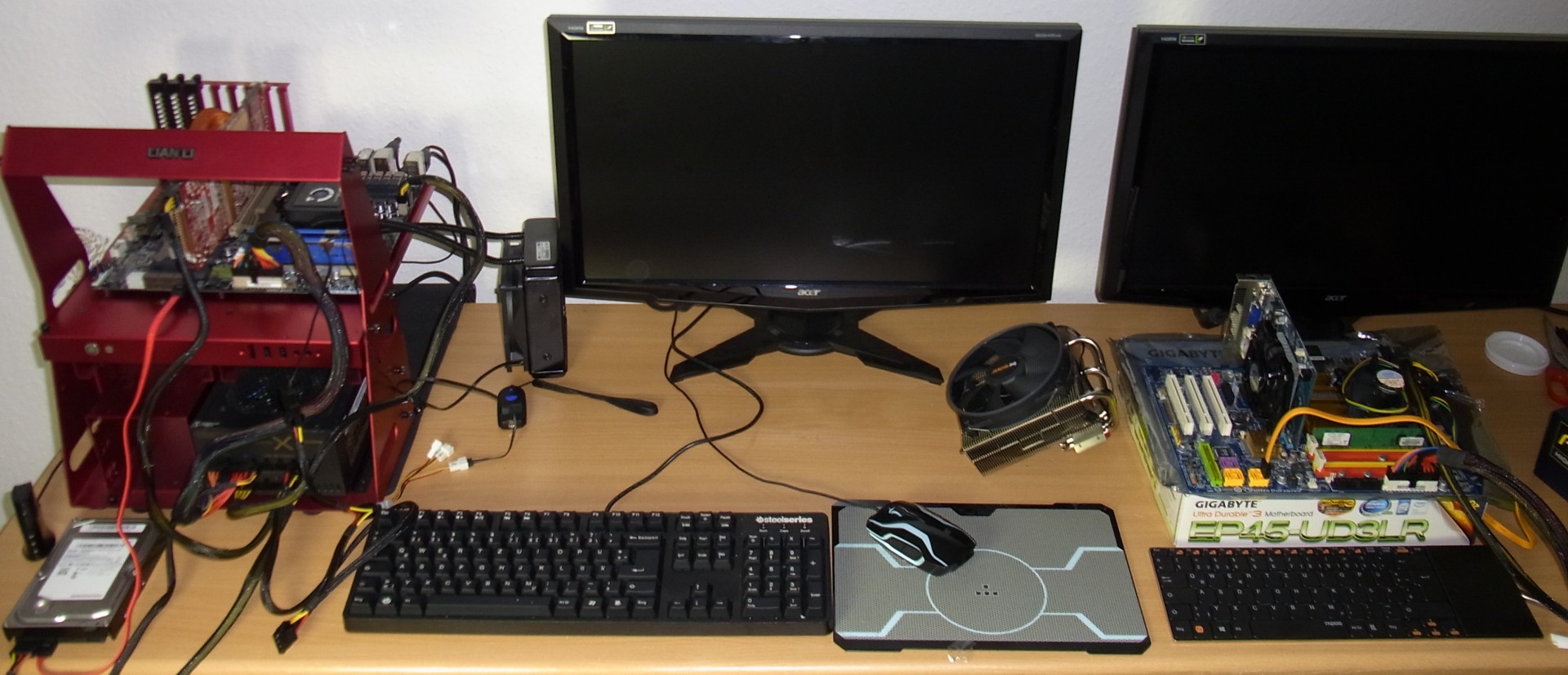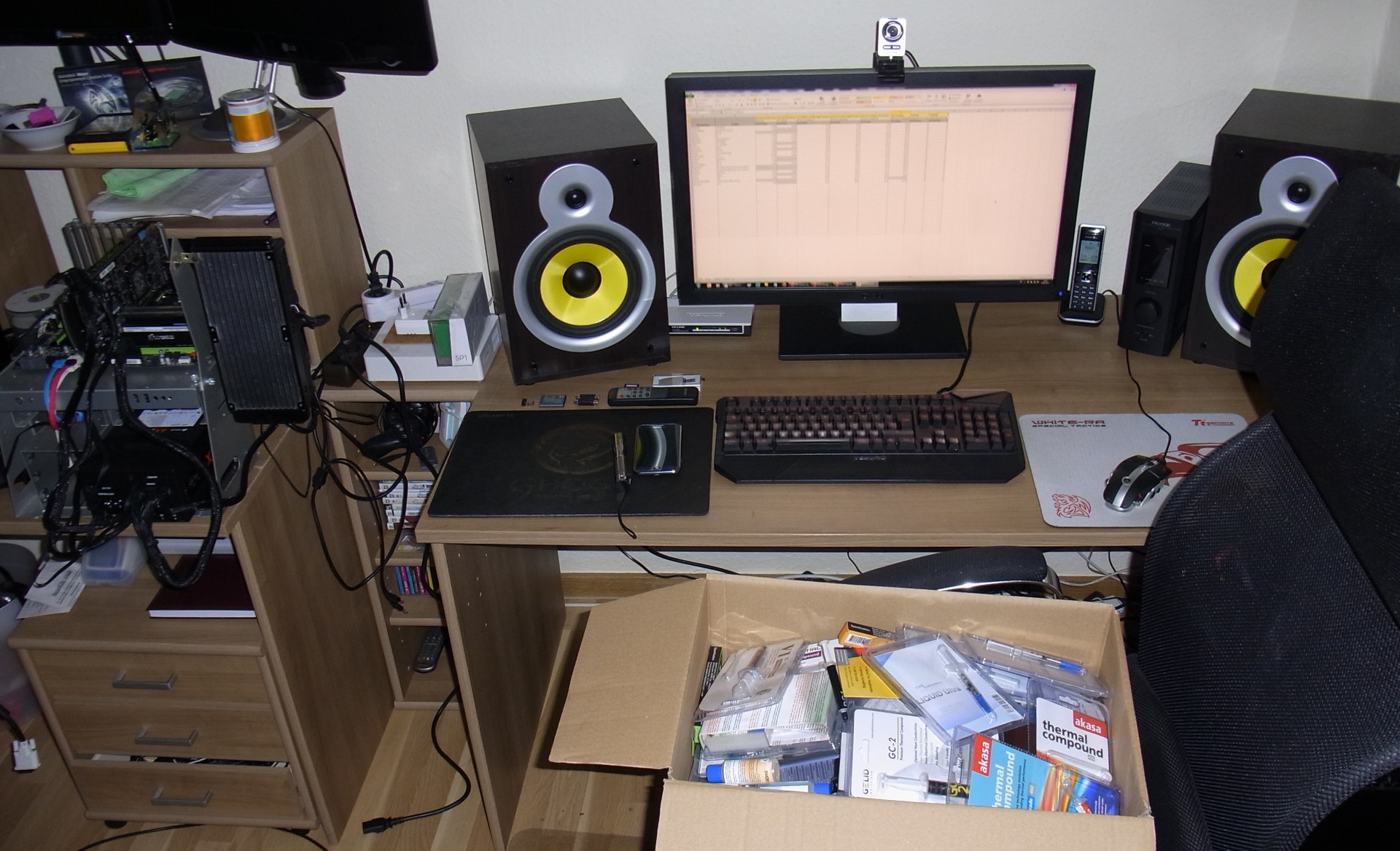Thermal Paste Comparison, Part Two: 39 Products Get Tested
It's time for the numbers. In addition to testing liquid metal compounds and thermally conductive adhesives, each paste is discussed on its own merits before we chart out the results of four usage cases. After all, these products behave differently.
It's Not As Easy As Picking A Favorite...
In the end, it doesn't necessarily matter how much you paid for your paste, or what thermal conductivity its manufacturer claims on the package. More important is the how: your application method makes or breaks this process.
Some of the pastes we tested remain classics, and are even relatively inexpensive. It only follows, then, that we'd caution you against spending big on a brand new paste that'll only make a temperature difference of 1 to 2 Kelvin. If that sort of delta plays a significant role in your overclock, you're courting disaster. Sufficient airflow through the enclosure should ensure that you're never dependent on a particularly high-performance thermal compound.
More hardcore overclockers tuning their systems competitively, or quiet computing enthusiasts who spin their fans down as low as possible for better acoustics might want to give more thought to their paste of choice. Even a majority of power users, however, should focus on a paste’s ease of use, leaning toward the softer compounds. A flawed application typically impacts thermal performance much more than the difference between pricey and value-oriented pastes ever could.
I don’t want to lift any one thermal compound up onto a pedestal, and I'm no fan of award inflation. Sure, I could drop a couple of favorites, but the assessment would be highly subjective because some folks weigh ease-of-use and performance differently. Moreover, a lot of these pastes perform a lot alike. We can still draw several conclusions from our work, though.
- Novices should gravitate to softer pastes and use the "lentil ball" application method
- Experts can warm up thicker pastes, making them easier to apply
- Softer pastes should be used with coolers that attach via low mounting pressure
- Pastes bundled with most CPU heat sinks are good enough
- Different rules apply for GPUs; you need to pick the compound you use on your graphics card very carefully
- While the legends spoken of liquid metals have a basis in fact, they are exaggerated
That’s it from my side. But let me also point out that our Thermal Compound Charts will be maintained with results from any new products that surface. What will I do with all the partially-used syringes and paste packs? Honestly, I don’t know. There's enough of this stuff around to last a lifetime...
Get Tom's Hardware's best news and in-depth reviews, straight to your inbox.
Current page: It's Not As Easy As Picking A Favorite...
Prev Page Results: Air-Cooled GPU; Medium Mounting Pressure
Igor Wallossek wrote a wide variety of hardware articles for Tom's Hardware, with a strong focus on technical analysis and in-depth reviews. His contributions have spanned a broad spectrum of PC components, including GPUs, CPUs, workstations, and PC builds. His insightful articles provide readers with detailed knowledge to make informed decisions in the ever-evolving tech landscape
-
dragonfang18 I loved the toothpaste part. What about Vicks Vaporub? I wonder how that thing would do.Reply -
TehDudeMan Great article guys! As a reader for over 10 years pretty much daily, this reminds me of the old Tom's Hardware. These type of in depth articles on enthusiast products are what I love.Reply -
Matt Edwards A great article, agree the application of the compound, not the compound itself is most important.Reply
Like ledpellet I too am curious about these diamond compounds. Wonder if it offers similar results to the Coollaboratory products with an easier application, or if the results simply don't justify the price. E.g in Australia, Innovation Cooling IC7 Diamond 7 Carat Thermal Compound Paste - 1.5G can be found for as much as $25. The cheapest I have managed to find it for is $15. For that price it would want to be good considering the leading GELID GC Extreme, can be found for around $8. -
danwat1234 Coollaboratory Liquid Ultra isn't all that good after a year of hard use. In fact, it completely hardens / dries. On my X9100 after 9 months of nearly 24/7 100% load, I started seeing high temps and after 1 year auto shut downs while crunching. Turns out it was shutting off because it hit the 105 C thermal protection.Reply
Opened it up; thermal compound was as hard as a rock. has to pocket knife blade and sand it down.
So for longevity it sucks. That is something to consider, not just initial performance, but performance months and years down the road. Especially for laptops that aren't designed to be opened up frequently for repasting.
After trying Liquid Ultra many times and having it fail on me, I've put on Arctic MX-2 that has a supposed 8 year durability rating. Initial performance is great, we'll see how it lasts (been 3 weeks so far). -
slomo4sho CLU and Arctic MX-4 are both great products. MX-2 and MX-4 can often be found free after rebate so they are an exceptional value.Reply

